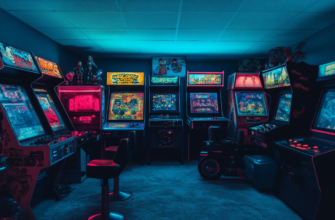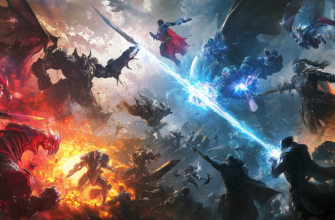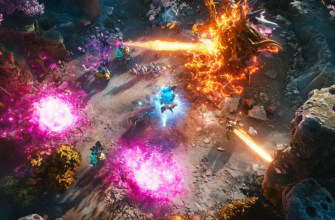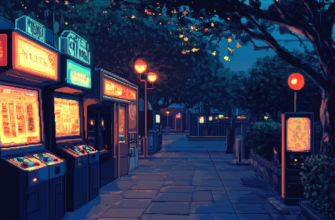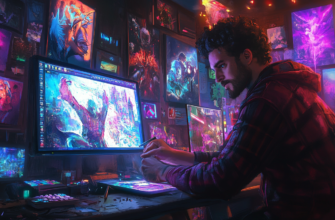- How in-game economies are created
- The inner workings of video game economies
- Step-by-step: How in-game economies are created
- Step 1: Establishing the basic framework
- Step 2: Setting up currency distribution methods
- Step 3: Balancing scarcity vs. abundance
- Step 4: Introducing in-game sinks
- Step 5: Creating demand
- Practical tips to boost your in-game economics strategy
- Tip 1: Know the market trends
- Tip 2: Take advantage of crafting systems
- Tip 3: Use multi-currency systems wisely
- Conclusion
How in-game economies are created
Hey there, fellow gamers! Have you ever found yourself grinding hours for gold, credits, or that rare piece of loot in your favorite game? You’re not alone. In-game economies are the backbone of most modern video games, and understanding how they’re created can give you a major edge both when playing and even when analyzing games more critically. It’s kind of like getting a peek under the hood and realizing how things work behind the scenes.
But how are these in-game economies actually created? Why do some games have thriving markets, while others seem like getting resources requires a crazy grind that can sometimes feel like real-life work? Let’s break it all down, step by step. Buckle up!
The inner workings of video game economies
An in-game economy isn’t as simple as just throwing in some virtual coins and calling it a day. These systems are carefully designed using concepts borrowed from the real-world economy (yeah, just like your country’s economy), but tailored to a digital universe where things like market scarcity, player demand, and digital currencies dictate value.
In fact, a well-designed in-game economy can significantly enhance player experience, keeping people engaged for longer and providing depth to gameplay. That’s why understanding how these systems are developed can help improve your in-game decisions, whether you’re playing an MMORPG, shooter, or even a mobile game.
Sound good? Great, let’s jump into the steps that developers take when they create in-game economies and how it impacts your gameplay experience.
Step-by-step: How in-game economies are created
Step 1: Establishing the basic framework
Before a developer can start designing an economy, they need to figure out the basics of their game world. You can’t have a working economy without understanding what kinds of resources, currencies, or rewards are involved.
- What type of currency does the game use? (Ex: Gold, credits, crystals)
- Is there a single resource system or multiple types of in-game assets? (Ex: gold for basic items, gems for premium purchases)
- Is there a marketplace or trading system where players can exchange items?
For most games, developers will also decide whether the economy will be closed (fixed number of resources available) or open (unlimited potential resources, often generated by players through activities). In massively multiplayer online games (MMOs), open economies are much more common, where players generate new resources through daily tasks or farming, which leads to dynamic changes in the market.
Step 2: Setting up currency distribution methods
Now that the framework is built, how do players get their hands on that sweet, sweet in-game currency or loot? Currencies need to be earned in some way, and not all players should have immediate access to the same amount of wealth. Games typically use various distribution methods to ensure a gradual scale of income or reward:
- Quests and missions: Completing objectives rewards players with in-game currency.
- Boss fights and treasure chests: Finding rare loot in hard-to-reach areas.
- Time-based systems: Logging in daily can reveal in-game currency boosts or bonuses.
- Trades or player exchanges: MMORPGs especially see interactions where players buy, sell, or trade with each other to distribute wealth.
For example, think of games like World of Warcraft. Completing dailies or boss raids get you gold and items that can be sold in the auction house, which builds up your in-game financial wealth. The way that developers design these distribution systems affects how players spend their time and make decisions in-game.
Step 3: Balancing scarcity vs. abundance
A healthy game economy has to strike a balance between scarcity and abundance. Too much scarcity, and the in-game market crashes for most players—it becomes frustratingly difficult to get the items they need. Too much abundance, and you run into inflation, where items lose their value because too many are available.
Developers often tweak the drop rates of rare items, fine-tune crafting materials, and add unique items that players can only get during specific events. These adjustments create value by making certain resources harder or easier to get, depending on the game’s goals. For example, rare mounts in Final Fantasy XIV might only drop on specific high-level raids, making them highly coveted and expensive among the player base.
Step 4: Introducing in-game sinks
If you’re unfamiliar with the term, in-game sinks are mechanisms in the game where currency, loot, or materials are removed from the game world. Sinks are incredibly important for maintaining economic stability. Without them, currency overload can lead to inflation, where players have too much money, and prices spiral out of control.
Common in-game sinks include:
- Repair costs: Frequent in MMOs where defense or attack stats decrease until you pay gold to restore gear.
- Item destruction: Consuming materials in crafting or using certain items can destroy them permanently.
- Auction taxes: Some games, like EVE Online, place a tax on player-to-player trades, limiting currency creation dynamics.
- Vanity expenses: Think skins, mounts, or purely aesthetic items that cost in-game currency but don’t affect performance and take money out of the economy.
For games that have dynamic player markets, such as Black Desert Online, having effective in-game sinks is key. Players are constantly generating wealth through farming or gathering, so the game introduces fees for special in-game actions that “sink” a player’s wealth as a balance.
Step 5: Creating demand
An economy doesn’t really work unless there’s demand. Developers usually need to create different levels of demand for certain items, currencies, and resources to keep players engaged. Rare items, for instance, inject excitement. When new content drops in a game, developers often introduce limited-time items or tier-ranking gear, which makes elder game players or early-adopters hustle to get the newest gear quickly.
Examples of how demand is created:
- Exclusive Events: Many online games host seasonal events with special rewards such as the holiday events in Overwatch. These items become valuable once they’re taken out of circulation, which increases their demand.
- Power/Progression: In most RPGs or MMOs, getting more powerful requires leveling up equipment or buying stronger consumables.
- Collectibles: Some games incorporate collectible items that players can trade with others, like the skins or operator outfits in Rainbow Six Siege or weapon skins in games like CS:GO.
By planning for shifts in demand, especially during live events or patches, developers can make sure that the game’s economy remains enticing and full of opportunities for players to grind or trade resources effectively.
Practical tips to boost your in-game economics strategy
All right bro, now we’ve gone through how in-game economies are made. Let’s talk about tips that you can use to give yourself an edge when dealing with in-game economies, no matter the type of game.
Tip 1: Know the market trends
If you’re playing a game with a player-driven economy, like an MMORPG such as Runescape or Albion Online, the in-game market will ebb and flow based on player demand and resource availability. If you can track market trends, knowing when an item is valuable or about to drop in price can save you time and frustration.
Tip 2: Take advantage of crafting systems
Many games give players opportunities to craft items that can be highly profitable to sell or use. In a game like Guild Wars 2, gathering raw materials and spending time crafting can end up profiting you directly or give you rare items necessary for progressing through the raid or dungeon phases.
Tip 3: Use multi-currency systems wisely
Some games feature different tiers of currency for free players and pay-to-play players, like in mobile games. Make sure you manage both wisely. Save premium currency for items that really give you an advantage or limited-time skins, and make sure you’re not needlessly squandering free currency on low-value purchases.
Conclusion
Understanding how in-game economies are created can really give you deeper insights into how a game is designed, where to focus your time, and how best to overcome grind walls. Game developers spend an insane amount of time balancing scarcity and abundance, currency sinks, and player demand to keep games fun and engaging. Now, the next time you’re neck-deep in loot or gold farming, you’ll have a tighter grasp of why things cost what they do and how to come out ahead!
If you’ve got your own tips or want to share how you’ve mastered an in-game economy, drop a comment! I’d love to hear your takes. Keep gaming, and may the loot gods smile on you!



